Before the carnage of battle could be captured with cameras, war was memorialized by the stroke of the artist’s brush.
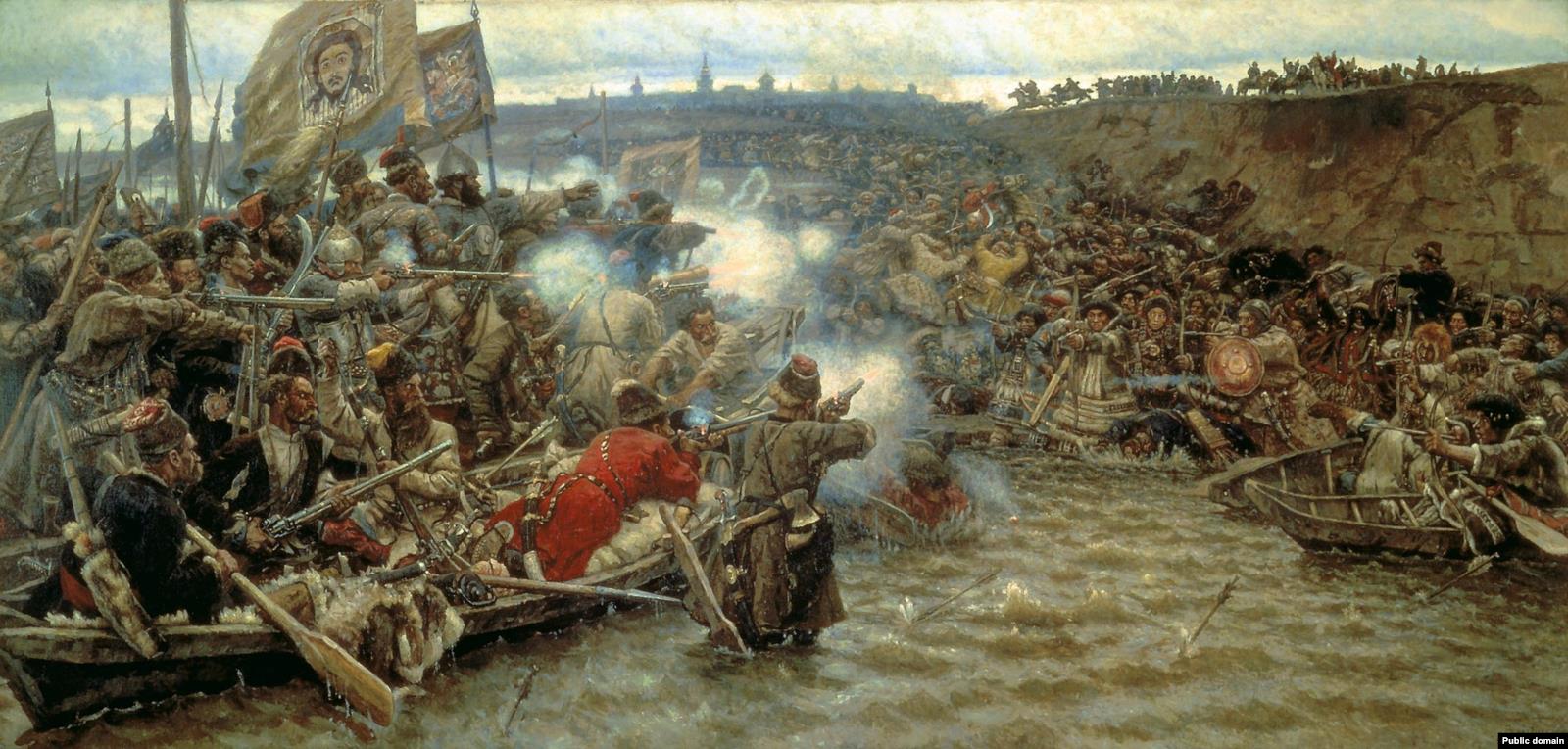
Yermak’s Conquest Of Siberia, by Vasily Surikov
Cossacks led by Yermak Timofeyevich wade into combat against a band of indigenous Siberians. The clash was the decisive moment of a 1580 expedition by Yermak and 840 of his men to open up tracts of Siberia to the lucrative trade in animal furs. The painting is based on the idea the Siberians fought with bows, arrows, and leather armor against the muzzle-loaded guns of Yermak’s Cossacks, though most details of the expedition are lost to time.
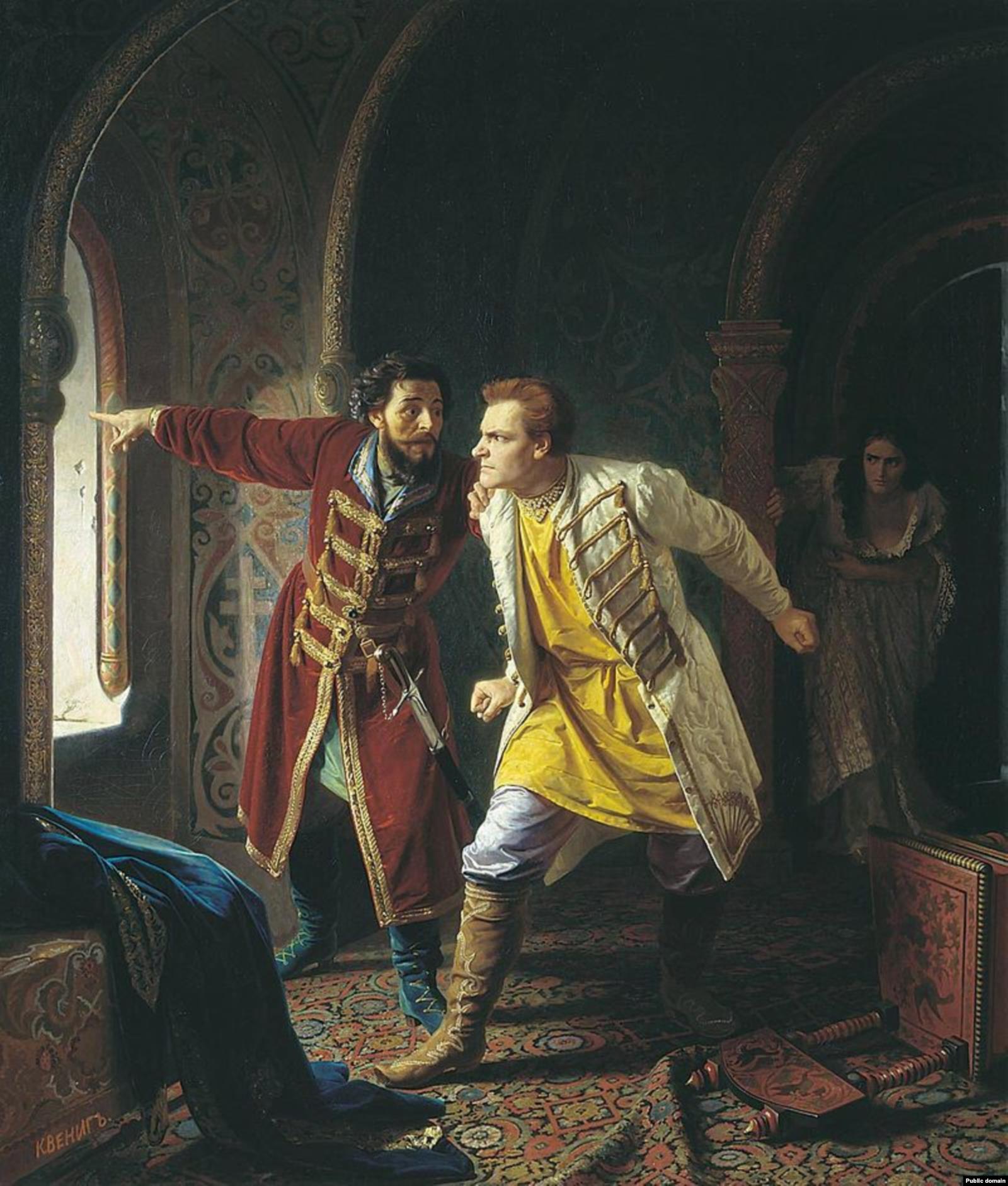
Last minutes of False Dmitry, by Carl Wenig
He claimed to be the heir to the Russian throne, but history has not been kind to the man now known as “False Dmitry I.” After marching into the Kremlin at the head of an army of supporters, Dmitry began a brief reign as tsar in 1605. But his fondness for foreign company and lack of deference for the Orthodox Church got sharp tongues wagging in Moscow. After a powerful nobleman accused him of spreading “Catholicism…and sodomy” a mob stormed the Kremlin. As he clambered out of a window to escape, Dmitry fell some 30 meters onto a courtyard. The wounded tsar was then staabbed to death with halberds and swords.
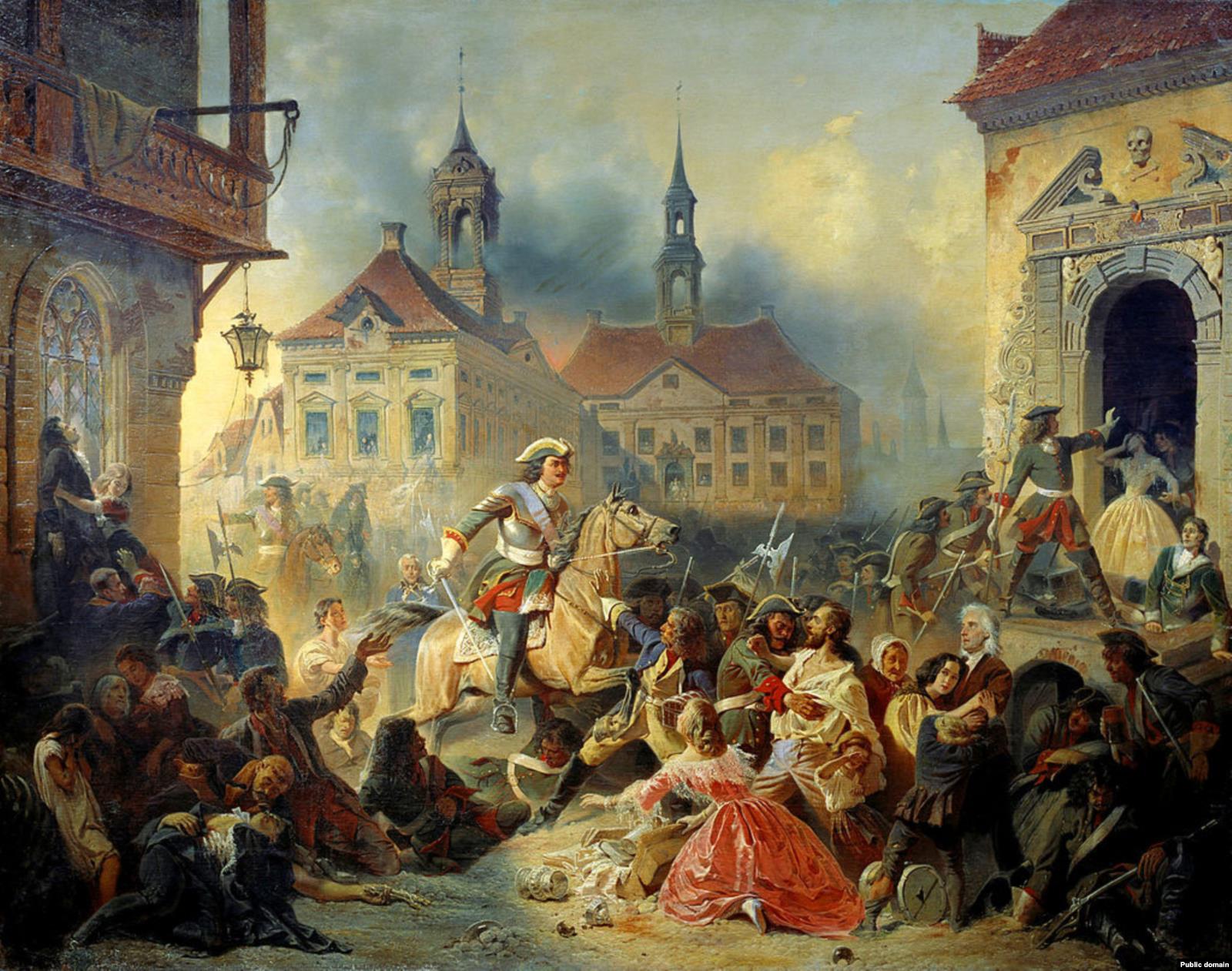
Peter I of Russia stops marauding soldiers after taking Narva in 1704, by Nikolai Saurweid
The riverside trading town of Narva (in today’s Estonia) had long been squabbled over by Russia and Sweden. After a siege, Russian forces burst through the then-Swedish town’s fortifications on August 9 and launched into an orgy of killing. The mob violence was reportedly only stopped by Peter the Great raging through the town on horseback to whip his men back into line.
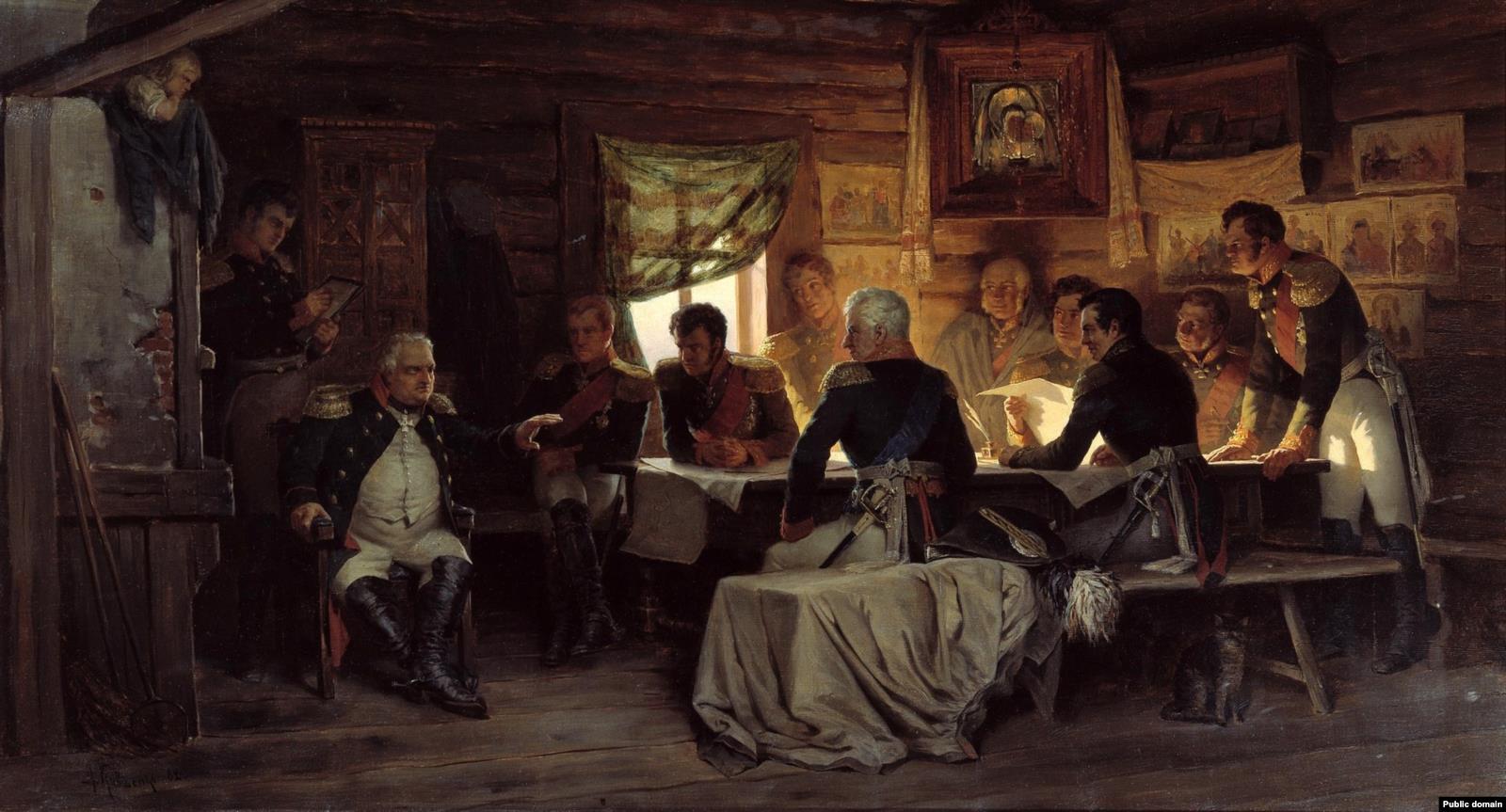
Kutuzov at the conference of Fili deciding to surrender Moscow to Napoleon, by Aleksei Kivshenko
While some artists draped the famously overweight Mikhail Kutuzov in flattering folds of cloth, this painter put the great general’s girth on full display in this tense meeting of Russian generals in a peasant’s home in 1812. Kutuzov’s decision to abandon Moscow to the marauding Grande Armée ended with a mysterious fire that reduced the city to ashes. Kutuzov was vindicated however, after the overstretched French waited in vain for Russia’s surrender before finally turning for home as winter and bands of enraged peasants tormented the fleeing invaders.
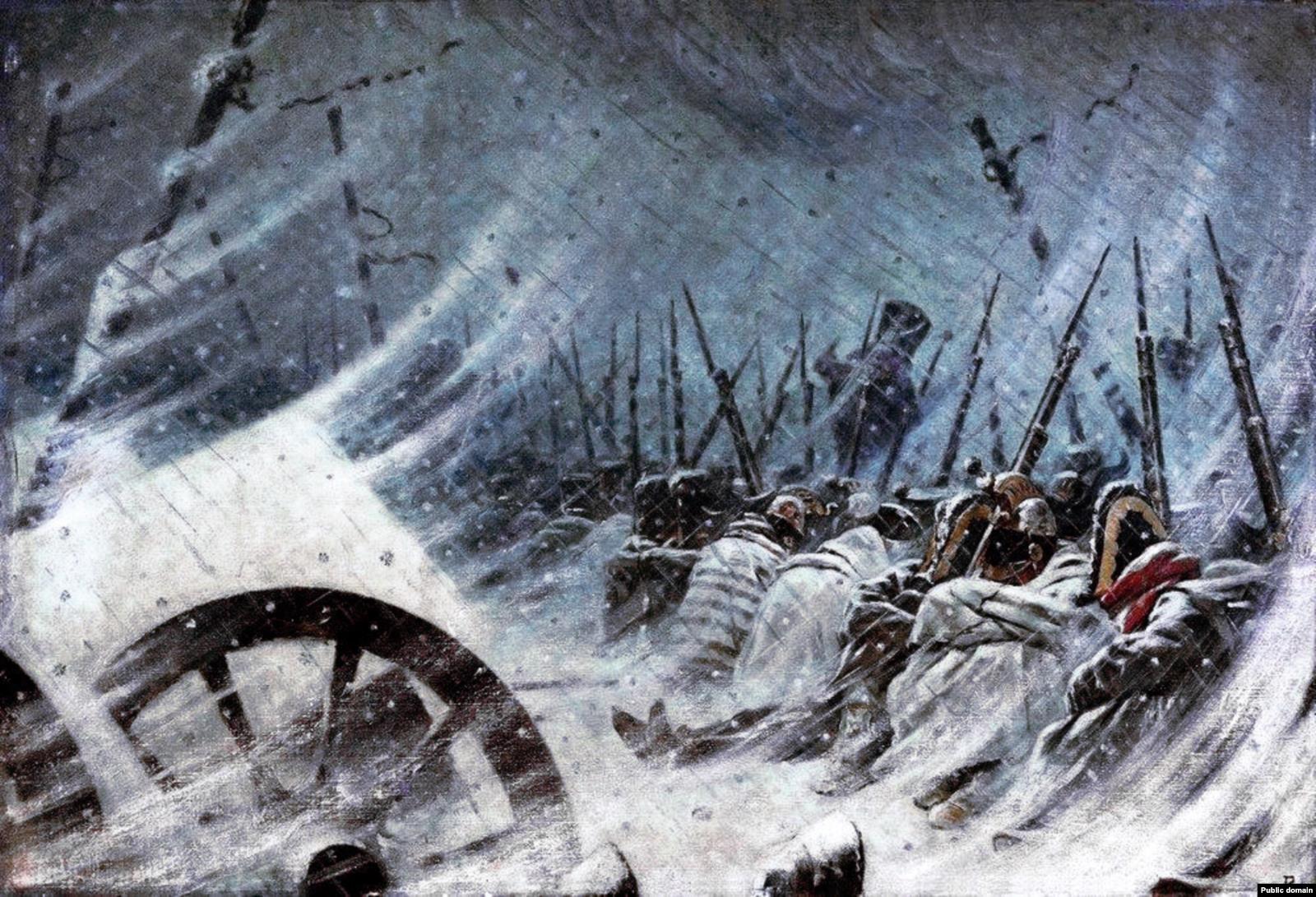
The Night Bivouac of Napoleon's Army during retreat from Russia in 1812, by Vasily Vereshchagin
A snow-caked cluster of troops after the ruinous invasion of Russia. By the end of the French retreat, some 380,000 of Napoleon’s soldiers lay dead on tsarist soil.
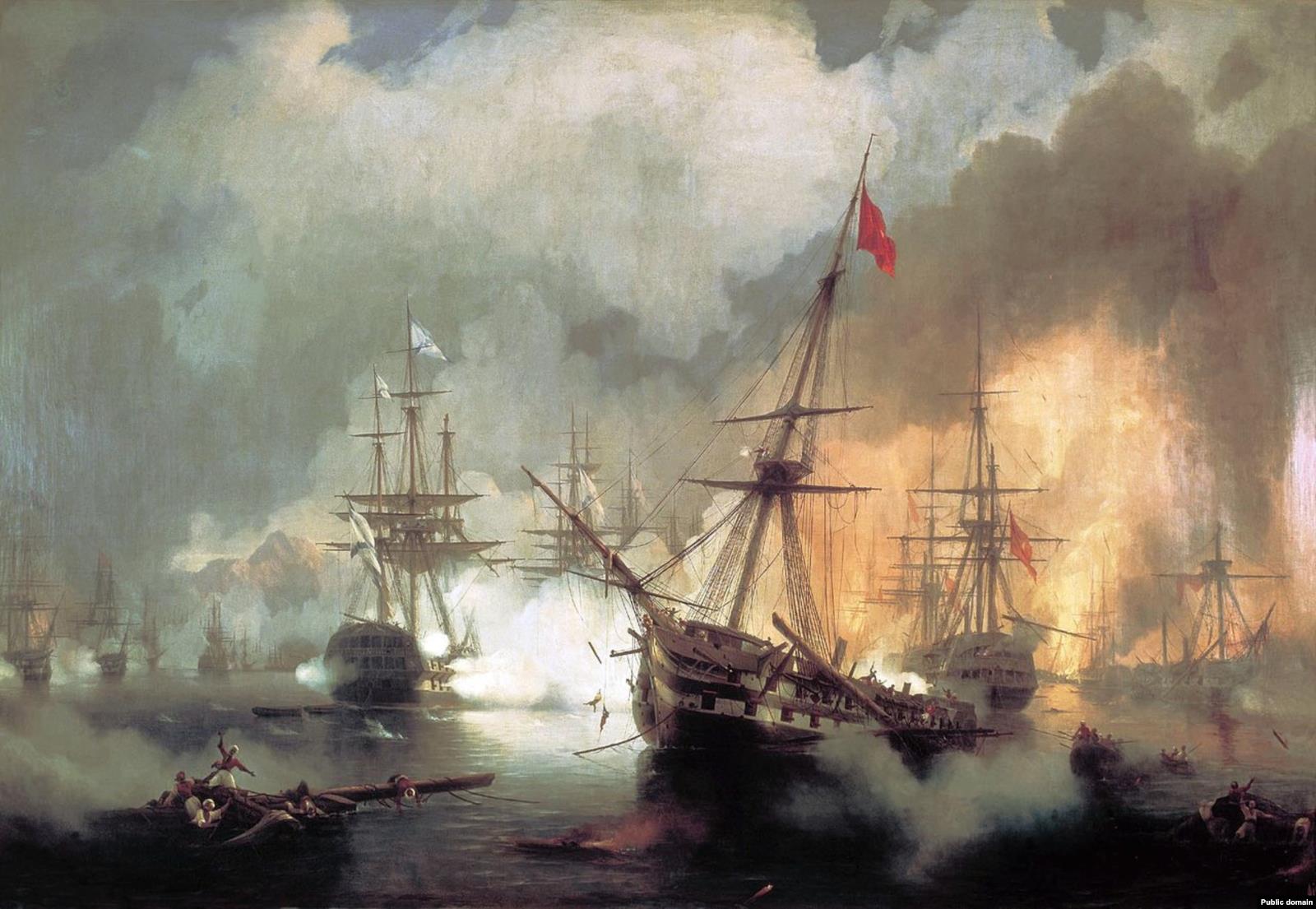
Battle of Navarino, by Ivan Aivazovsky
Ottoman sailors topple into the sea as Russian ships, allied with the British and French, hammer the Sultan’s fleet. The 1827 clash arose after a massacre of independence-minded Greeks by Ottoman forces. After international outcry over the atrocity, the three great European powers stepped in to defend the Greek cause.

The Fight in Malakoff Gorge, September 8, 1855, by Adolphe Yvon
Twenty-eight years after fighting alongside France and England against the Ottomans, Russia was pitted against all three in the Crimean War. French painter Adolphe Yvon captured the smoke-filled chaos as French troops stormed Malakoff hill, above Sevastopol. After a redoubt atop the hill was captured, the tower became famous throughout Europe and lent its name to a creamy, rum-soaked cake and a crispy cheese ball.

The Battle of Shipka Pass, by Aleksei Popov
Russian soldiers and Bulgarian volunteers pelt Ottoman troops with rocks after running out of ammunition during a battle for a critical mountain pass. The clash was part of a war to drive the Ottomans out of Bulgaria after thousands of villagers were massacred, and some reportedly impaled and burned alive, by the Ottoman Turks’ infamous “bashi-bazouk” (crazy head) militia.
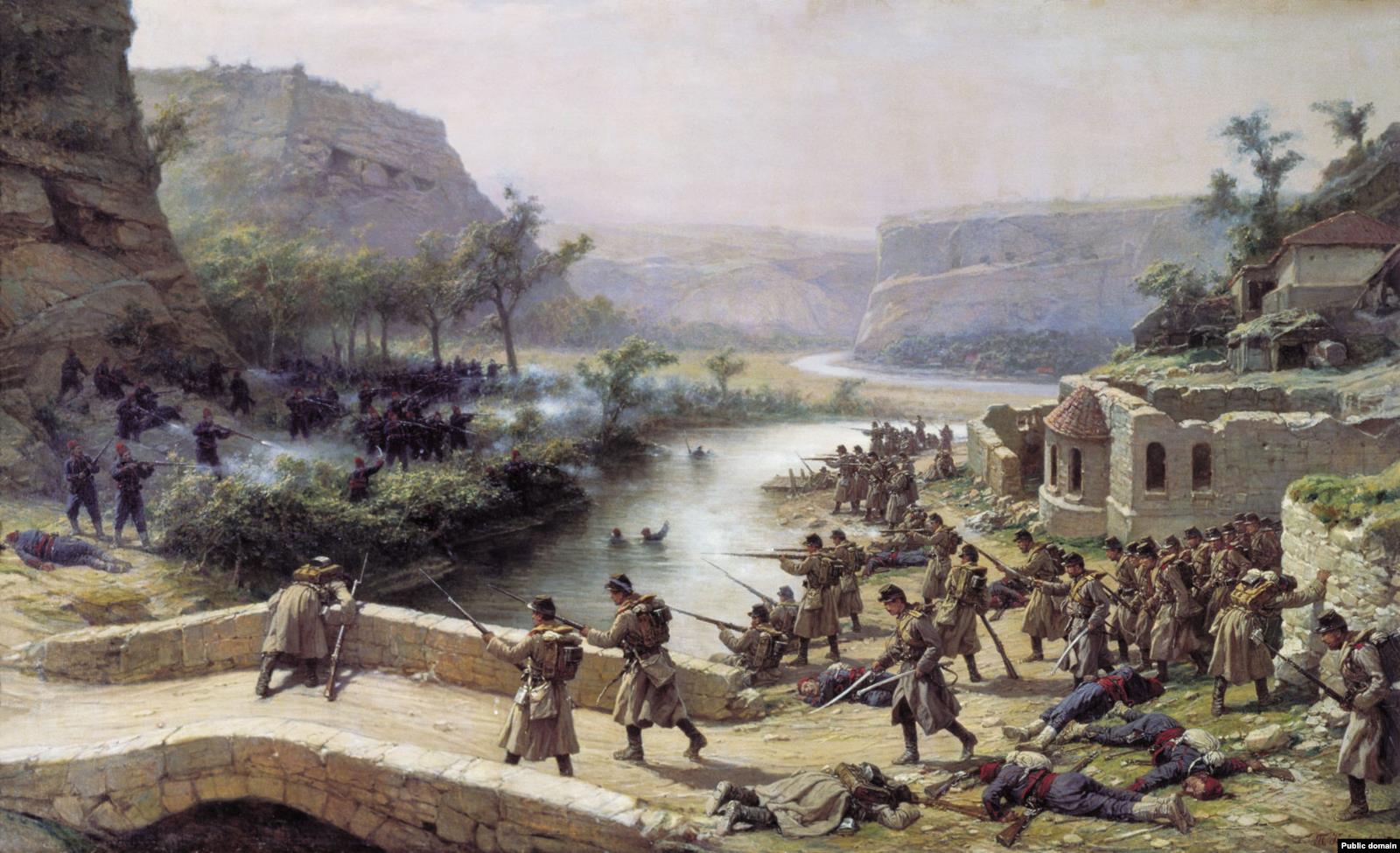
Fight near Ivanovo Chiflik, by Pavel Kovalevsky
Another scene from the 1877-78 Russo-Turkish war as Russian troops (right) skirmish with Ottoman forces. After winning the war, Russian authorities destroyed almost all of the mosques in Bulgaria’s capital, Sofia. Several were reportedly destroyed overnight as a thunderstorm masked the noise of the Russian demolitions. By the time Russia’s next major war (with Japan) broke out in 1905, technology had advanced to the point that skilled photographers could capture the heat of battle and had overtaken painters as the main artists of record.